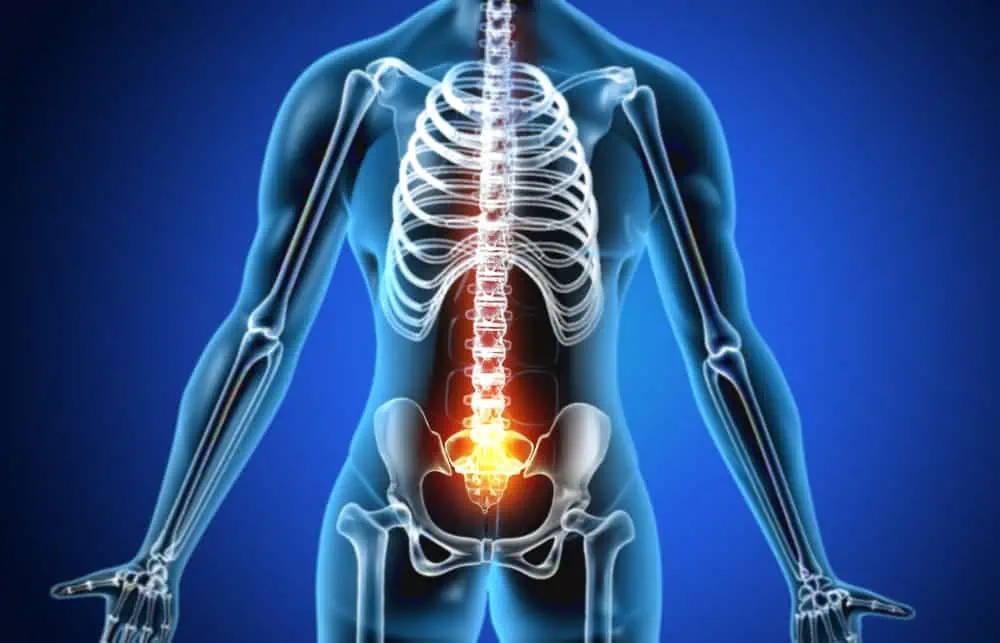Oral opioids, by their very nature, are an inefficient – as well as a potentially dangerous – option for pain relief. That’s because opioids aren’t administered directly where they’re needed; after consumption, they work their way through the bloodstream before attaching to the opioid receptors in the brain, spinal cord and other organs.[1]
Fortunately, there’s a more efficient way to administer pain-relieving medications: directly where the pain signals travel. This method, called intrathecal pump implantation (or targeted drug deliver), delivers medication right to the intrathecal space, meaning pain relief can be achieved with roughly 1/300 of the dose of oral opioids.[2] For some chronic pain patients, this means more accurate pain relief with fewer of the side effects linked to oral opioids.
Overview of Intrathecal Pumps
An intrathecal pump consists of a pump, which can contain various combinations of medication, and a catheter. The device is able to provide targeted pain relief because the catheter is placed directly into the intrathecal space, the region surrounding your spinal cord. Pain signals travel along the spinal cord to the brain; the catheter delivers medication directly to that area, effectively preventing the pain signals from being perceived by the brain.[3]
The amount of medication released into the intrathecal space is controlled with an external programmer, which is pre-set with parameters and can be used by the patient to control breakthrough pain.
Intrathecal pumps are generally recommended for people with chronic pain who have utilized conservative treatments with limited success. It may also be used for people who have had surgery but are still experiencing pain, or people for whom surgery is not likely to help.[3]
Getting a Pump
The qualification process for a pump begins with a behavioral health consult for all patients. Patients who are experiencing depression, a lack of social support or a lack of motivation toward wellness do not do as well with implantable therapies. So during this mandatory step, a behavioral health professional will ensure that the patient is in the best possible position to achieve success with the implant.
After behavioral health clearance, the patient will undergo a reversible trial of the devise to ensure effectiveness of the therapy. This important step allows each patient to try the device and make sure it provides them adequate pain relief.
During the trial, the doctor administers local anesthetic then inserts a catheter through either a needle or a small incision into the intrathecal space. The catheter is then connected to an external temporary pump.[3] The patient will be able to try the system for roughly a week, and if the patient and the physician deem the trial successful, then a permanent device will be implanted.
During the permanent procedure, the patient will typically be put under local anesthetic. The temporary catheter will be removed and replaced with a permanent one. A permanent pump will be placed under the skin, usually in the abdomen, and connected to the catheter.[3]
Follow-up Care and Side Effects
After implantation, the patient will need to visit the doctor regularly so the pump can be refilled with medications. The pump itself contains a battery that will last several years. (The battery life will depend on which type of pump is utilized.)[3] After that time, a new catheter will be implanted.
There are may be some side effects related to the implant. For instance, mild discomfort and swelling at the incision site can occur after implantation. Over time, activity may move or damage the catheter, which would then require repositioning or replacement.
What is Intrathecal Pump Implantation?
An intrathecal pain pump implantation, or targeted drug delivery, is used to relieve chronic pain. The intrathecal pain pump implantation delivers small amounts of medication directly to the intrathecal space (area surrounding the spinal cord) to prevent pain signals from being perceived by the brain. Because the medication is delivered directly to where pain signals travel, intrathecal drug delivery offers many people dramatic pain management, with a dose smaller than would be required with oral medication. This results in fewer side effects associated with oral medication, such as sleepiness, upset stomach, vomiting and constipation.
A trial will be done first to determine if intrathecal pump implantation would work for your pain management. If you achieve a good level of pain relief (50 percent or greater) you may be a candidate for a permanent pump.
Although uncommon, intrathecal pump implantation risks include infection, bleeding, itching, difficulty urinating, nausea, discomfort, drainage or swelling at the surgical site, severe headache, swelling in the extremities, increased pain, weakness or numbness or a disconnected catheter..
Benefits of Intrathecal Drug Delivery
- Reduces the need for oral medications
- Reduces the side effects associated with oral medications (brain fog, sleepiness, upset stomach, constipation)
- Trial is completed for four-seven days to determine effectiveness of therapy
- Outpatient procedure, little recovery time needed
- Reversible therapy can be removed at any time
- Patient controlled programmer allows for pre-set parameters to control breakthrough pain
References
[1] “What Are Opioids?” Drugabuse.gov. National Institute on Drug Abuse (NIDA), Nov. 2014. Web. 04 Aug. 2016.
[2] Lynch, Louise. “Intrathecal Drug Delivery Systems.” Continuing Education in Anaesthesia, Critical Care & Pain 14, no. 1 (September 4, 2013): 27-31.
[3] “ViewMedica Patient Engagement Videos.” Swarm Interactive. 2015. Accessed August 5, 2016. http://www.viewmedica.com/.












